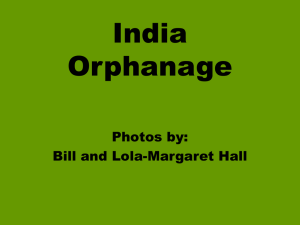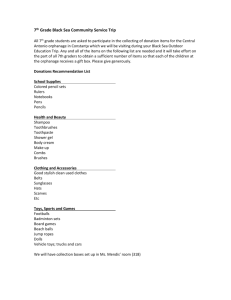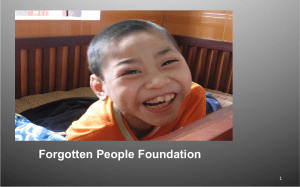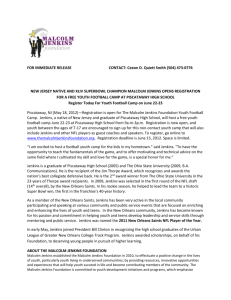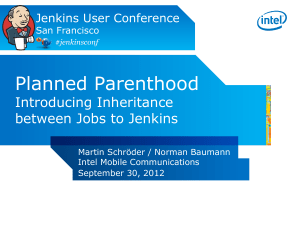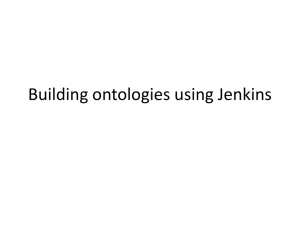Study Guide - State Library of Louisiana
advertisement
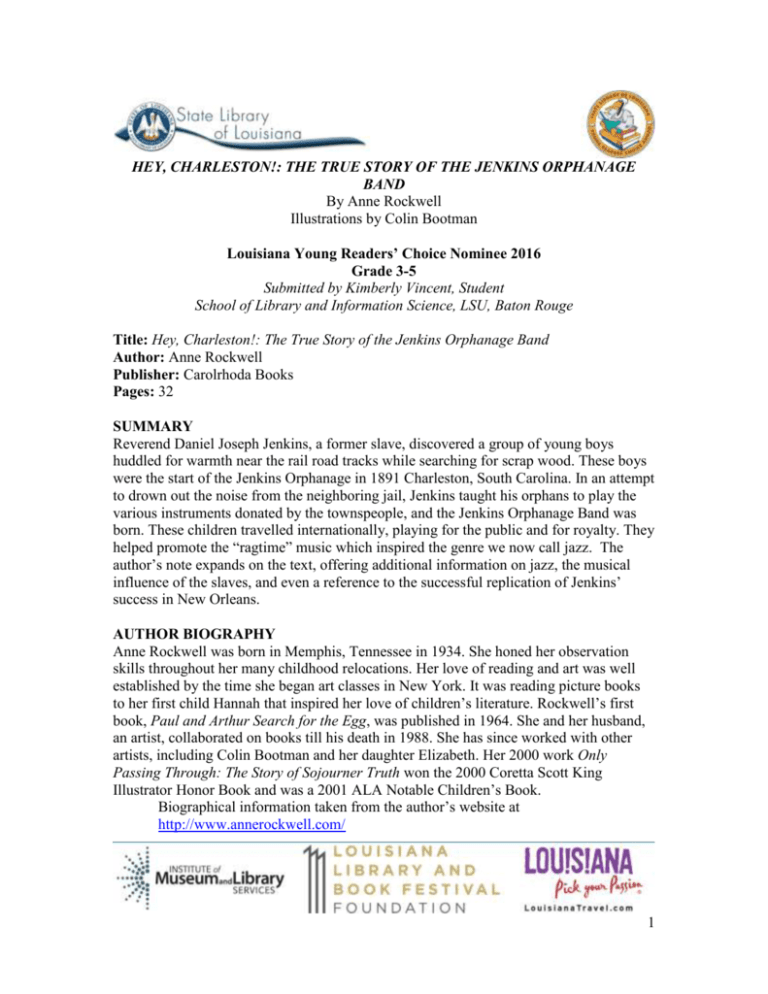
HEY, CHARLESTON!: THE TRUE STORY OF THE JENKINS ORPHANAGE BAND By Anne Rockwell Illustrations by Colin Bootman Louisiana Young Readers’ Choice Nominee 2016 Grade 3-5 Submitted by Kimberly Vincent, Student School of Library and Information Science, LSU, Baton Rouge Title: Hey, Charleston!: The True Story of the Jenkins Orphanage Band Author: Anne Rockwell Publisher: Carolrhoda Books Pages: 32 SUMMARY Reverend Daniel Joseph Jenkins, a former slave, discovered a group of young boys huddled for warmth near the rail road tracks while searching for scrap wood. These boys were the start of the Jenkins Orphanage in 1891 Charleston, South Carolina. In an attempt to drown out the noise from the neighboring jail, Jenkins taught his orphans to play the various instruments donated by the townspeople, and the Jenkins Orphanage Band was born. These children travelled internationally, playing for the public and for royalty. They helped promote the “ragtime” music which inspired the genre we now call jazz. The author’s note expands on the text, offering additional information on jazz, the musical influence of the slaves, and even a reference to the successful replication of Jenkins’ success in New Orleans. AUTHOR BIOGRAPHY Anne Rockwell was born in Memphis, Tennessee in 1934. She honed her observation skills throughout her many childhood relocations. Her love of reading and art was well established by the time she began art classes in New York. It was reading picture books to her first child Hannah that inspired her love of children’s literature. Rockwell’s first book, Paul and Arthur Search for the Egg, was published in 1964. She and her husband, an artist, collaborated on books till his death in 1988. She has since worked with other artists, including Colin Bootman and her daughter Elizabeth. Her 2000 work Only Passing Through: The Story of Sojourner Truth won the 2000 Coretta Scott King Illustrator Honor Book and was a 2001 ALA Notable Children’s Book. Biographical information taken from the author’s website at http://www.annerockwell.com/ 1 Accessed October 8, 2014 ILLUSTRATOR BIOGRAPHY Colin Bootman lived in his native Trinidad for seven years before moving to the United States. Art was his comfort as he adjusted to his new environment. He attended LaGuardia High School of the Arts and studied writing and illustration in college. Bootman has won multiple awards, including the Coretta Scott King Illustrator Honor Book Award in 2004 for Almost to Freedom and the ALA Scheider Family Book Award in 2006 for Dad, Jackie, and Me. Biographical information taken from the illustrator’s website at http://www.colinbootman.net/ Accessed October 8, 2014 ADDITIONAL INFORMATION Author website: http://www.annerockwell.com/ Illustrator website: http://www.colinbootman.net/ OTHER TITLES BY AUTHOR Only Passing Through: The Story of Sojourner Truth (2000) Open the Door to Liberty! A Biography of Toussaint L’Ouverture (2009) OTHER TITLES BY ILLUSTRATOR Almost to Freedom (2003) Grandmama’s Pride (2005) RELATED TITLES When the Beat Was Born: DJ Kool Herc and the Creation of Hip Hop by Laban Carrick Hill Duke Ellington: The Piano Prince and His Orchestra by Andrea David Pinkney CLASSROOM CONNECTIONS Language Arts: After listening to samples of ragtime music, discuss rhythm, beat, rhyme, and poetry. Have students write a poem about music or lyrics for a ragtime song of their own. Social Studies: The Teaching American History in South Carolina website offers a lesson plan about the Gullah contributions to South Carolina history, which were also referenced in the book as a contributing influence to the development of ragtime. The lesson plan includes a brief biography of the people, and activities include using a map to discuss the Gullah people’s African heritage, using Gullah music (link provided to audio) to explore the language, using Gullah stories for student performance, and more. The website address is http://www.teachingushistory.org/lessons/pdfs_and_docs/documents/GullahContr ibutionstoSouthCarolinaHistory.html 2 Art: Dance: Teach students the Charleston dance. Music: o Play sample from ragtime music and jazz. Have the children discuss the differences and similarities between the two. o Have the students tap their feet to the beat of a ragtime song. Discuss the concept of rhythm and beat. o While playing different pieces of ragtime music, have the students count their heart beats. Have the students calculate their heart rate during each song and discuss the energizing or soporific effect music can have on the body. Vocabulary: Abandoned Ancestor Baritone Clang Cornet Fanfare Gracious Huddle Orphanage Piccolo Plight Raucous Saxhorn Stranded Tuba DISCUSSION QUESTIONS 1. What was Reverend Jenkins’ motivation for helping the children he found near the railroad tracks? Provide evidence from the book to support your answer. 2. Why did the city council offer support for an African-American orphanage in a time period not far removed from the Civil War? Provide evidence from the book to support your answer. 3. What was the children’s motivation to play music? Provide evidence from the book to support your answer. 4. Where did the instruments come from and how did it affect the development of the band’s musical style? Provide evidence from the book to support your answer. 5. What was the motivation to give all band earnings to those seeking to escape wartorn Europe? Provide evidence from the book to support your answer. RELATED WEBSITES Charleston Jazz Initiative: Descriptions of Our Collections http://charlestonjazz.net/collections-about/ The first collection listed is focused on the Jenkins Orphanage Band. The collection is comprised of approximately 50 items from Edmund Thornton Jenkins. Pictures are provided on the site. The site offers a great deal of information on jazz, local musicians, and collections that include manuscripts, photographs, recordings, oral histories, public program excerpts, musician biographies, musical recordings, and more. One oral history of note was told by a 95-year-old blacksmith discussing the influence of the Jenkins Orphanage Bands and other musicians. 3 Jenkins Institute http://www.jenkinsinstitute.org/ This is the official website of the Jenkins Orphanage, now named the Jenkins Institute. It provides information on the founder, the Institute’s history, Jenkins Band alumni, and current information about the Institute. University of South Carolina Libraries: Moving Image Research Collections: Fox Movietone News Story 1-507: Jenkins Orphanage Band http://library.sc.edu/mirc/playVideo.html?i=30 The short performance by the Jenkins Orphanage Band embedded on this website is the earliest surviving recording. 4
